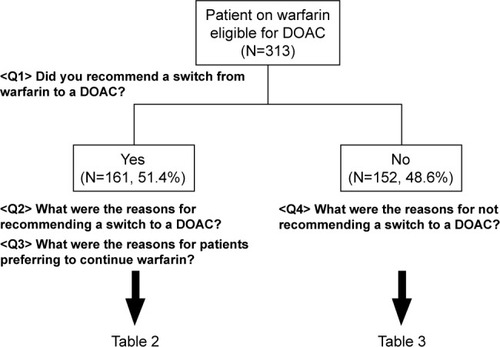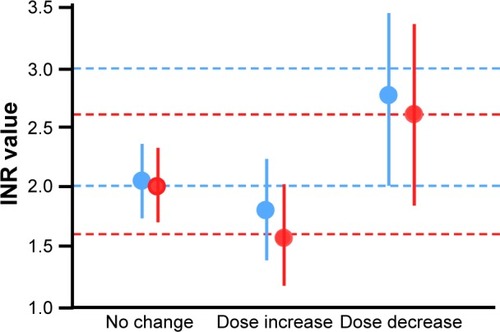Figures & data
Figure 1 Flowchart of questions about physician recommendations to switch to DOACs or continue warfarin.
Abbreviation: DOAC, direct oral anticoagulant.

Table 1 Patient demographic and clinical characteristics
Figure 2 INR values when doses of warfarin were increased or decreased in patients <70 years old and ≥70 years old.
Abbreviation: INR, international normalized ratio.

Table 2 Reasons physicians recommended switching to DOACs (N=161)
Table 3 Reasons in favor of continued warfarin therapy (N=152)
Table 4 Physicians’ perspective on patients suitable for warfarin treatment (N=38)
Table 5 Physicians’ perspective on patients suitable for switching to DOACs (N=38)
Table 6 Demographic and clinical characteristics of patients receiving continued warfarin therapy (current study) and patients who switched to apixaban (AGAIN studyCitation38)
